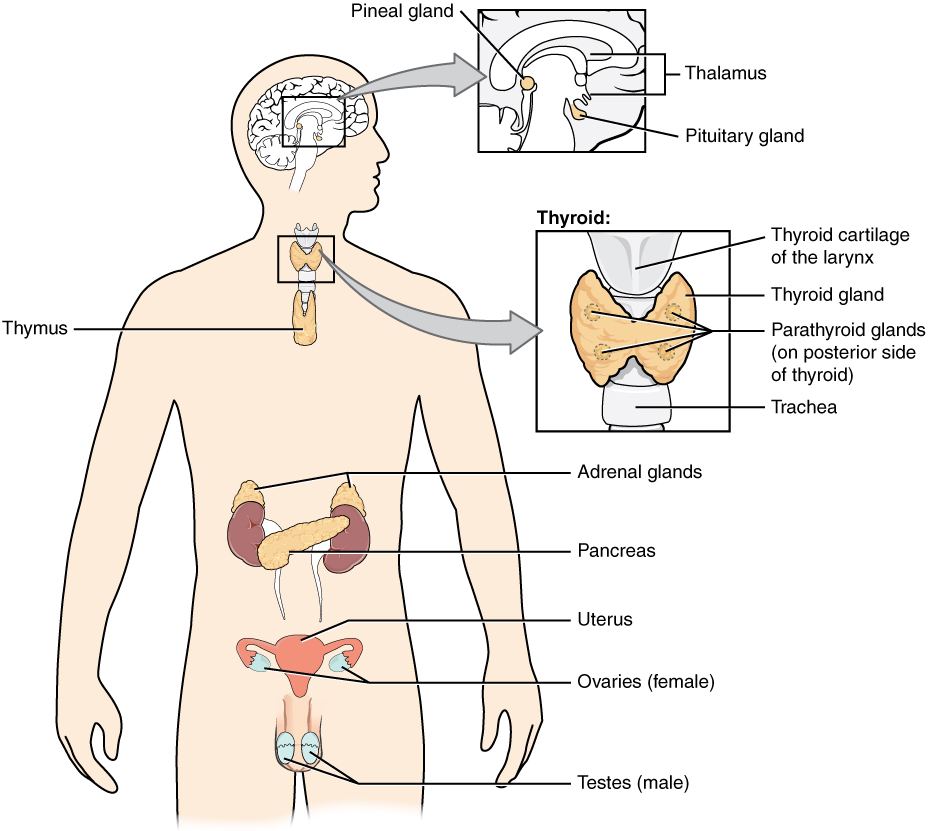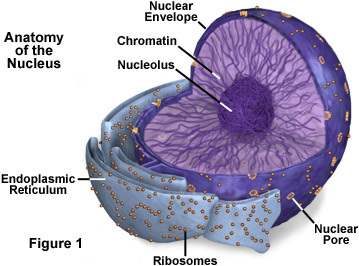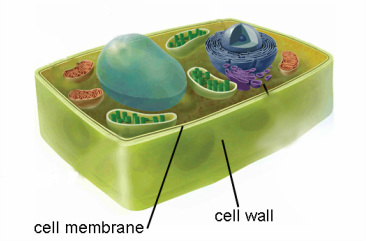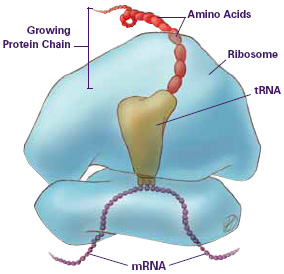जीवन की
मौलिक इकाई
कोशिका : शरीर की
संरचनात्मक एवं क्रियात्मक इकाई को कोशिका कहते हैं |
·
यह सभी सजीवों की मुलभुत इकाई है |
·
सभी सजीव कोशिका से बने हैं |
·
जैसे - एक भवन को बनाने के लिए ईंट (brick) संरचनात्मक इकाई का
काम करता है थी उसी प्रकार किसी भी सजीव के शरीर निर्माण भी एक एक कोशिका को जोड़कर
होता है |
कोशिकाएँ (Cells)
↓
उत्तक (Tissues)
↓
अंग (Organs)
↓
शारीरक तंत्र (Body system)
↓
शरीर (Body)
कोशिका एक संरचनात्मक इकाई है :
कोशिका हमारे शरीर को आकार प्रदान करता है इसलिए यह शरीर का संरचनात्मक इकाई
है |
कोशिका एक क्रियात्मक इकाई है :शरीर के सभी कार्य कोशिकीय स्तर पर होते
है इसलिए यह शरीर का क्रियात्मक इकाई है |
कोशिका की खोज : कोशिका का सबसे पहले पता राबर्ट हुक ने 1665 में लगाया था |
राबर्ट ब्राउन ने 1831 में कोशिका में
केन्द्रक का पता लगाया |
कोशिका सिद्धांत : सभी पौधे तथा जंतु कोशिकाओं से बने हैं
और वे जीवन की मुलभूत इकाई है | सभी कोशिकाएँ पूर्ववर्ती
कोशिकाओं से बनती हैं | इस सिद्धांत को सर्व प्रथम दो जीव
वैज्ञानिक एम. स्लीडन (1833) तथा टी. स्वान (1839) ने बताया |
कोशिकीय आधार पर जीवों का प्रकार:
कोशिकीय
आधार पर जीव दो प्रकार के होते हैं -
(A) एककोशिकीय जीव : वे जीव जो एक ही कोशिका के बने होते हैं एवं स्वयं में ही एक सम्पूर्ण
जीव होते है एक कोशिकीय जीव कहलाते हैं | जैसे- अमीबा,
पैरामिशियम, क्लेमिड़ोमोनास और बैक्टीरिया
(जीवाणु) आदि |
|
(B) बहुकोशिकीय जीव : वे जीव जिनमें अनेक कोशिकाएँ समाहित होकर विभिन्न कार्य को सम्पन्न करने
हेतु विभिन्न अंगो का निर्माण करते है, बहुकोशिकीय जीव
कहलाते है | जैसे- फंजाई (कवक) पादप, मनुष्य एवं अन्य जन्तु आदि |
|
* प्रत्येक बहु कोशिकीय जीव एक कोशिकीय जीवों से ही विकसित हुआ है |
* कोशिकाएँ विभाजित होकर अपनी जैसी कोशिकाएँ बनाती हैं |
* इस प्रकार सभी कोशिकाएँ अपनी पूर्ववर्ती कोशिकाओं से उत्पन्न होती है |
* बहुकोशिकीय जीवों में श्रम विभाजन होता है अर्थात शरीर के विभिन्न अंग में
कार्य करने के लिए विभिन्न एक विशिष्ट कोशिकाएँ होती हैं |
कोशिकाओं की आकृति तथा आकार उनके विशिष्ट कार्यों के अनुरूप होते हैं :
(i) कुछ कोशिकाएँ अपनी आकार बदलती रहती हैं - जैसे : अमीबा
(ii) कुछ जीवों में कोशिका का आकार स्थिर रहता है - जैसे : तंत्रिका कोशिका |
मानव शरीर
में पाए जाने वाले कुछ कोशिकाओं का नाम :
(i) तंत्रिका कोशिका (Nerve cell)
(ii) रुधिर कोशिका (Blood cell)
(iii) वसा कोशिका (Fat cell)
(iv) अस्थि कोशिका (Bone cell)
(v) चिकनी पेशी कोशिका (Muscular Cell)
(vi) जनन कोशिका: (Reproductive Cell)
(a) शुक्राणु (sperm)
(b) अंडाणु (Ovum)
पादप कोशिका और जन्तु कोशिका में अंतर
पादप कोशिका
1. इसमें कोशिका भित्ती होती है ।
2. इसमें हरित लवक उपस्थित होते है ।
3. इनमें प्रकाश संश्लेषण होता हैं ।
4. ये प्रायः बड़े आकार की होती हैं ।
|
जन्तु कोशिका
1. इसमें कोशिका भित्ती नही होती हैं ।
2. इसमें हरित लवक अनुपस्थित होते हैं ।
3. इनमे प्रकाश संश्लेषण नही होता हैं ।
4. ये प्रायः छोटे आकार की होती हैं ।
|
कोशिका के भाग (Parts Of Cell):
(i) प्लाज्मा झिल्ली (Plasma Membrane) : यह कोशिका की सबसे बाहरी परत है जो
कोशिका के घटकों को बाहरी पर्यावरण से अलग करती है | प्लाज्मा झिल्ली लचीली होती है और कार्बनिक
अणुओं जैसे लिपिड (phospolipids) तथा प्रोटीन के दो परतों से
बनी होती है |
कोशिका झिल्ली का लचीलापन: कोशिका झिल्ली
का लचीलापन एक कोशिकीय जीव जैसे अमीबा को अपने बाह्य
पर्यावरण से अपना भोजन या अन्य पदार्थ ग्रहण करने में सहायता करता है | इसी लचीलापन के कारण अमीबा अपना आकार बदल पाता
है और खाद्य पदार्थ को कुटपाद के सहारे निगल जाता है | अमीबा
या अन्य एककोशिकीय जीवों में भोजन ग्रहण करने की इस प्रक्रिया को इंडोसाइटोसिस अथवा फैगोसाइटोसिस कहते है |
कार्य:
(i) यह कोशिका द्रव्य को बाहरी पर्यावरण से
अलग करता है |
(ii) यह कोशिका की बाहरी तत्वों से रक्षा
करता है |
(iii) कुछ चुने हुए पदार्थो का कोशिका के
अंदर या बाहर आने-जाने की क्रिया प्लाज्मा झिल्ली के द्वारा ही होता है | जबकि अन्य पदार्थों की गति को रोकती है |
(iv) विसरण एवं परासरण की क्रिया इसी झिल्ली
के द्वारा होता है |
प्लाज्मा झिल्ली वर्णात्मक
पारगम्य झिल्ली होती है :
प्लाज्मा झिल्ली कुछ चुने हुए पदार्थों को ही अंदर अथवा
बाहर जाने देती है तथा अन्य पदार्थो की गति को रोकती है | इसलिए कोशिका झिल्ली को
वर्णात्मक पारगम्य झिल्ली भी कहते हैं |
कुछ चुने हुए पदार्थ जैसे - कार्बन डाइऑक्साइड अथवा ऑक्सीजन कोशिका झिल्ली के आर-पार विसरण प्रक्रिया द्वारा आ-जा सकते है |
पदार्थों की गति का नियम: पदार्थों की गति
उच्च सांद्रता से निम्न सांद्रता की ओर होती है |
विसरण (Diffusion) : विसरण एक कोशिकाओं
में होने वाली प्रक्रिया है जिसमें कार्बन डाइऑक्साइड एवं ऑक्सीजन जैसे गैसीय पदार्थों के अणुओं का परिवहन वर्णात्मक पारगम्य झिल्ली के द्वारा होता है | यह प्रक्रिया विसरण कहलाती है |
कोशिकाओं में विसरण की
प्रक्रिया: CO2 जैसे कोशिकीय अपशिष्ट जब कोशिका में अधिक मात्रा में
इक्कठा हो जाती है तो उसकी सांद्रता (concentration) बढ़ जाता
है | कोशिका के बाह्य पर्यावरण में CO2 की सांद्रता कोशिका
के अंदर की अपेक्षा कम होती है | जैसे ही कोशिका के अंदर और
बाहर CO2 की सांद्रता में
अंतर आता है उसी समय उच्च सांद्रता से निम्न सांद्रता की ओर विसरण की प्रक्रिया
द्वारा कोशिका से CO2 बाहर निकल जाती है | इसी प्रकार कोशिका में ऑक्सीजन O2 की सांद्रता कम हो जाती है और बाहर ऑक्सीजन O2 की सांद्रता बढ़ जाती है तो बाहर से O2 कोशिका में अंदर वर्णात्मक पारगम्य झिल्ली से विसरण की प्रक्रिया द्वारा कोशिका के अंदर चली जाती है | इस प्रकार कोशिका तथा बाह्य पर्यावरण में गैसों का आदान-प्रदान विसरण की
प्रक्रिया द्वारा होता है |
परासरण (Osmosis): जल के अणुओं की गति
वर्णात्मक पारगम्य झिल्ली द्वारा हो तो उसे परासरण कहते हैं |
जिस प्रकार गैसों का आदान-प्रदान विसरण की प्रक्रिया द्वारा
होता है | ठीक उसी नियम का पालन परासरण में भी होता है |
परासरण में जल के अणुओं की गति भी वर्णात्मक पारगम्य झिल्ली द्वारा उच्च
सांद्रता से निम्न सांद्रता की ओर होता है |
(ii) केन्द्रक (Nucleus)
: केन्द्रक कोशिका
का सबसे बड़ा कोशिकांग है जो कोशिका के अंदर पाया जाता है | गुणसूत्र (chromosomes)
कोशिका के केन्द्रक में ही पाया जाता है, जो
सिर्फ कोशिका विभाजन के समय ही दिखाई देते हैं |
केन्द्रक झिल्ली : केन्द्रक के चारों ओर दोहरे परत का एक
स्तर होता है जिसे केन्द्रक झिल्ली कहते है | केन्द्रक झिल्ली में छोटे-छोटे छिद्र होते
हैं | इन छिद्रों के द्वारा केन्द्रक के अंदर का कोशिकाद्रव्य
केन्द्रक के बाहर जा पाता है |
गुणसूत्र (chromosomes) : गुणसूत्र एक छाडाकार (cilyndrical) संरचना होती
है जो कोशिका के केन्द्रक में पाया जाता है, ये कोशिका
विभाजन के समय दिखाई देते हैं | गुणसूत्र (क्रोमोसोम) में
अनुवांशिक गुण होते हैं जो माता-पिता से DNA (डिऑक्सी राइबो
न्यूक्लिक अम्ल) अनु के रूप में अगली संतति में जाते है |
·
क्रोमोसोम DNA तथा प्रोटीन के बने होते हैं |
·
DNA अणु में कोशिका के निर्माण व् संगठन की सभी आवश्यक सूचनाएँ होती हैं |
·
DNA के क्रियात्मक खंड को जीन कहते हैं |
·
जो कोशिका, कोशिकायें विभाजन की प्रक्रिया में भाग नहीं लेती हैं उसमें
यह DNA क्रोमैटीन पदार्थ के रूप में विद्यमान रहता है |
क्रोमैटीन : क्रोमैटीन पदार्थ धागे की तरह की रचनाओं
के एक जाल का पिण्ड होता है | जब कभी भी कोशिका विभाजन होने वाली होती है, तब यह क्रोमोसोम में संगठित हो जाता है |
कोशिका विभाजन (Cell Division):
कोशिका विभाजन वह प्रक्रिया है जिसमें एक अकेली कोशिका
विभाजित होकर दो नयी कोशिका बनाती है |
कोशिकीय जनन में केन्द्रक की भूमिका :
·
कोशिका विभाजन के दौरान केन्द्रक भी दो भागों में विभक्त हो
जाता है |
·
नयी कोशिका में जनक कोशिका के ही सभी गुण मौजूद रहते है |
·
यह कोशिका के विकास एवं परिपक्वन को निर्धारित करता है |
·
साथ ही साथ सजीव कोशिका की रासायनिक क्रियाओं को भी
निर्देशित करता है |
बैक्टीरिया जैसे कुछ जीवों में केन्द्रक झिल्ली नहीं होती
है अत: कोशिका का केन्द्रकीय क्षेत्र बहुत कम स्पष्ट होता है | ऐसे अस्पष्ट केन्द्रक
क्षेत्र में केवल क्रोमैटीन पदार्थ होता है | ऐसे क्षेत्र को केन्द्रकाय कहते हैं |
(A) प्रोकैरियोट जीव : ऐसी जीव जिनकी कोशिकाओं में केन्द्रक झिल्ली नहीं होती उन्हें प्रोकैरियोट जीव कहते है | जैसे - बैक्टीरिया आदि |
(B) यूकैरियोट जीव : ऐसे जीव जिनकी कोशिकाओं में केन्द्रक झिल्ली होती है उन्हें यूकैरियोट जीव कहते है | जैसे- सभी बहुकोशिकीय जीव |
केन्द्रक झिल्ली के उपस्थिति के आधार पर कोशिका
दो प्रकार के होते हैं :
(I) प्रोकैरियोटिक कोशिका : जिन कोशिकाओं में केन्द्रक झिल्ली नहीं
होती है उन्हें प्रोकैरियोटिक कोशिका कहते है | ऐसी कोशिकाएँ जीवाणुओं में पाई जाती है |
(II) यूकैरियोटिक कोशिका : जिन कोशिकाओं में
केन्द्रक झिल्ली पाई जाती है उन्हें यूकैरियोटिक कोशिका कहते है | शैवाल, एवं अन्य सभी बहुकोशिक जीवों की कोशिका |
(iii) कोशिकाद्रव्य (Cytoplasm) : कोशिका का वह बड़ा क्षेत्र जो कोशिका
झिल्ली से घिरा रहता है तथा एक विशेष प्रकार के तरल पदार्थ से भरा रहता है | कोशिका द्रव्य कहलाता है | कोशिका के इसी भाग में
कोशिकांग (organelles) पाए जाते हैं |
कोशिकांग (organells): प्रत्येक कोशिका के जीवद्रव्य में अनेक
छोटे- छोटे कोशिका के विशिष्ट घटक पाए जाते है जो कोशिका के लिए विशिष्ट कार्य
करते हैं | इन्हें ही कोशिकांग (organelles) अर्थात कोशिका
अंगक कहते हैं | जैसे - माइटोकांड्रिया, गाल्जी उपकरण, तारक केंद्र, लाइसोसोम,
राइबोसोम, तथा रिक्तिका आदि ये सभी कोशिकांग
हैं |
जीवद्रव्य (cytoplasm) : कोशिका द्रव्य तथा केन्द्रक
दोनों को मिलाकर जीवद्रव्य कहते हैं |
सभी कोशिकांग कोशिका के जीवद्रव्य (cytoplasm) में पाए जाते हैं |
कोशिकांगों का कार्य:
(i) नए पदार्थ का निर्माण करना
(ii) पदार्थों का निष्कासन करना
(iii) कोशिका के लिए उर्जा संचित करना
अलग-अलग कार्य करने वाली सभी कोशिकाओं में चाहे वे कोई भी
कोशिका क्यों न हो कोशिकांग एक ही प्रकार के होते हैं |
झिल्ली की सार्थकता/उपयोगिता :
वायरस में किसी भी प्रकार की झिल्ली नहीं होती और इसलिए
इसमें जीवन के गुण तब तक लक्षित नहीं होते जब तक कि यह किसी सजीव के शरीर में
प्रविष्ट करके कोशिका कि मशीनरी का उपयोग कर अपना बहुगुणन नहीं कर लेता |
सांद्रता के आधार पर विलयन
का प्रकार :
(I) अल्पपरासरण दाबी विलयन
(Hypo-tonic Solution): यदि कोशिका को तनु (dilute) विलयन वाले माध्यम अर्थात जल में शक्कर अथवा नमक की मात्रा कम और जल की
मात्र ज्यादा है, में रखा गया है तो जल परासरण विधि द्वारा
कोशिका के अंदर चला जायेगा | ऐसे विलयन को अल्पपरासरण दाबी
विलयन कहते हैं |
इसके परिणामस्वरुप कोशिका फूलने लगेगी |
(II) समपरासारी दाबी विलयन (Iso-tonic
Solution): यदि कोशिका को ऐसे माध्यम विलयन में रखा
जाए जिसमें बाह्य जल की सांद्रता कोशिका में स्थित जल की सांद्रता के ठीक बराबर हो
तो कोशिका झिल्ली से जल में कोई शुद्ध गति नहीं होगी | ऐसे विलयन को समपरासारी
दाबी विलयन कहते हैं |
इसके परिणामस्वरुप कोशिका के माप अथवा आकार में कोई
परिवर्तन नहीं आएगा |
(III) अतिपरासरण दाबी विलयन (Hyper tonic Solution): यदि कोशिका के बाहर वाला विलयन अंदर के घोल से अधिक सान्द्र है तो जल परासरण
द्वारा कोशिका से बाहर आ जायेगा | ऐसे विलयन को अतिपरासरण दाबी विलयन कहते हैं |
इसके परिणामस्वरुप कोशिका सिकुड़ जाएगी |
पौधों के मूल द्वारा जल का
अवशोषण: एक कोशिकीय अलवणीय जलीय जीवों तथा
अधिकांश पादप कोशिकाएँ परासरण द्वारा जल ग्रहण करते हैं | पौधों के मूल द्वारा जल
का अवशोषण परासरण का एक उदाहरण है |
कोशिका के जीवन में विसरण
(Diffusion)
का महत्व :
(i) विसरण जल तथा गैसों के आदान-प्रदान की
प्रक्रिया में महत्वपूर्ण भूमिका निभाता है |
(ii) विसरण कोशिका को अपने बाहरी पर्यावरण से
पोषण ग्रहण करने में सहायता करता है |
(iii) कोशिका से विभिन्न अणुओं का अंदर आना
तथा बाहर निकलना भी विसरण के द्वारा होता है |
(iv) पौधों के मूल द्वारा जल का अवशोषण
परासरण द्वारा ही होता है |
कोशिका भित्ति (Cell wall): कोशिका भित्ति के वल पादप कोशिकाओं में
ही पाई जाती है जो कि यह मुख्यत: सेल्युलोज (Cellulose) की
बनी होती है | यह पौधों को संरचनात्मक दृढ़ता प्रदान करता है |
सेल्युलोज (Cellulose): यह एक विशेष प्रकार
की जटिल कर्बोहाइड्रेट होती है जो पौधों में ही पाई जाती है तथा यह पौधों को संरचनात्मक दृढ़ता प्रदान करता है | सेल्युलोज
का पाचन सभी शाकाहारी जीव आसानी से कर पाते है जबकि मनुष्य की आंत (intestine)
इसका पाचन नहीं कर पाता है | ऐसा इसलिए है कि
मनुष्य की आंत अन्य शाकाहारी जीवों की अपेक्षा छोटी होती है |
जीवद्रव्य कुंचन (Plasmolysis): जब किसी पादप कोशिका
में परासरण द्वारा पानी की हानि होती है तो कोशिका झिल्ली सहित आन्तरिक पदार्थ
संकुचित हो जाती हैं | इस घटना को जीवद्रव्य कुंचन कहते हैं |
पादप कोशिकाएँ परिवर्तनीय माध्यम को जंतु
कोशिका की अपेक्षा आसानी से सहन कर सकती है | कैसे ?
कोशिका भित्ति पौधों, कवक तथा बैक्टीरिया की कोशिकाओं को
अपेक्षाकृत कम तनु विलयन अर्थात अल्पपरासरण दाबी विलयन में बिना फटे बनाए रखती है |
ऐसे माध्यम से कोशिका परासरण विधि द्वारा पानी लेती है | कोशिका फुल जाती है और कोशिका भित्ति के ऊपर दबाव डालती है | कोशिका भित्ति भी फूली हुई कोशिका के प्रति सामान रूप से दबाव डालती है |
कोशिका भित्ति के कारण पादप कोशिकाएँ परिवर्तनीय माध्यम को जंतु
कोशिका की अपेक्षा आसानी से सहन कर सकती है |
कोशिकांग (Cell Organelles) :
1. अंतर्द्रव्यी जालिका (Endoplasmic
Reticulum) (ER):
अंतर्द्रव्यी जालिका झिल्ली युक्त नलिकाओं तथा शीट का बहुत
बड़ा तंत्र है | ये लंबी नलिका अथवा गोल या आयताकार थैलों (sac) कि
तरह दिखाई देती हैं | अंतर्द्रव्यी जालिका की रचना भी प्लाज्मा झिल्ली के समरूप होती है |
अंतर्द्रव्यी जालिका दो प्रकार कि होती है :
(I) खुरदरी अंतर्द्रव्यी जालिका (RER) :
(a) RER तैयार प्रोटीन को ER
के द्वारा कोशिका के अन्य भागों में भेज देता है |
(b) इसमें राइबोसोम उपस्थित
रहता है |
(II) चिकनी अंतर्द्रव्यी जालिका (SER) :
(a) SER वसा अथवा लिपिड
अणुओं के बनाने में सहायता करती है |
(b) इसमें राइबोसोम
उपस्थित रहता है |
अंतर्द्रव्यी जालिका का
कार्य :
(i) यह कोशिकाद्रव्य तथा केन्द्रक के
मध्य जालिका तंत्र (network system) का निर्माण करता है |
(ii) यह कोशिकाद्रव्य तथा केन्द्रक के
मध्य प्रोटीन के परिवहन के लिए नलिका के रूप में कार्य करता है |
(iii) ER कोशिका की कुछ जैव रासायनिक क्रियाओं के लिए कोशिकाद्रव्यी ढाँचे का कार्य करता है |
(iv) यकृत कोशिकाओं में SER विष एवं दवाओं के विषाक्त प्रभाव को कम करने में महत्त्वपूर्ण भूमिका
निभाता है |
(v) SER वसा अथवा लिपिड अणुओं के बनाने
में सहायता करती है |
झिल्ली जीवात-जनन (membrane bio-genesis): कुछ प्रोटीन तथा वसा
कोशिका झिल्ली को बनाने में सहायता करते हैं | इस प्रक्रिया
को झिल्ली जीवात-जनन (membrane bio-genesis) कहते हैं |
2. गाल्जी उपकरण/बॉडी (Golgi apparatus) :
यह झिल्ली युक्त पुटिका है जो एक दुसरे के ऊपर समांतर रूप
से सजी रहती हैं | जिन्हें कुण्डिका कहते है |
गाल्जी उपकरण का कार्य :
(i) यह ER की झिल्लियों
से जुड़कर जटिल झिल्ली तंत्र के दुसरे भाग को बनाती है |
(ii) ER में संश्लेषित पदार्थों के लिए
पैकेजिंग का कार्य करता है |
(iii) गोल्जी उपकरण में सामान्य शर्करा से
जटिल शर्करा बनती है |
(iv) इसके द्वारा लाइसोसोम को भी बनाया जाता
है |
ब्लैक रिएक्शन : कैमिलो गाल्जी ने अकेली तंत्रिका तथा
कोशिका संरचनाओं को अभिरंगित करने की क्रन्तिकारी विधि प्रदान की | इस विधि को ब्लैक
रिएक्शन के नाम से जाना जाता है | इस विधि में उन्होंने
सिल्वर नाइट्रेट के तनु घोल का उपयोग किया था और विशेषत: यह कोशिकाओं कि कोमल
शाखाओं कि प्रक्रियाओं का मार्ग पता लगाने में महत्वपूर्ण था |
3. राइबोसोम (Ribosome):
राइबोसोम कोशिका द्रव्य में मुक्त अवस्था में पाई जाने वाली
गोल आकृति कि संरचना होती है | ये कोशिका द्रव्य में मुक्त रूप से पाई जा सकती है अथवा
अंतर्द्रव्य जालिका (ER) से जुडी हो सकती हैं | राइबोसोम को कोशिका का प्रोटीन-फैक्ट्री भी कहा जाता है, क्योंकि यह प्रोटीन बनाता है |
राइबोसोम का कार्य:
(i) यह RNA (Ribonucleic-acid) का बना होता है |
(ii) यह एमिनो-अम्ल से प्रोटीन का निर्माण
करता है |
(iii) ये कोशिका के जैव-रासायनिक
क्रिया-कलापों के लिए सतह प्रदान करता है |
4. लाइसोसोम (Lysosomes):
लाइसोसोम कोशिका का अपशिष्ट निपटाने वाला तंत्र है | यह झिल्ली से घिरी हुई
संरचना है | लाइसोसोम बाहरी पदार्थों के साथ -साथ कोशिकांगों
के टूटे-फूटे भागों को पाचित करके साफ करता है |लाइसोसोम में
बहुत शक्तिशाली पाचनकारी एंजाइम होते है जो सभी कार्बनिक पदार्थों को तोड़ सकने में
सक्षम है |
लाइसोसोम एक आत्मघाती थैली :
कोशिकीय चयापचय (Metabolism) में व्यवधान के कारण जब कोशिका क्षतिग्रस्त या मृत हो जाती है, to लाइसोसोम फट जाते हैं और इनके शक्तिशाली एंजाइम अपनी ही कोशिकाओं को पाचित
कर देते हैं इसलिए लाइसोसोम को आत्मघाती (sucidal) बैग कहते
है |
लाइसोसोम का कार्य:
(i) यह कोशिका के अपशिष्टों को पाचित कर कोशिका को साफ रखता है |
(ii) इसके शक्तिशाली एंजाइमस कोशिकांगो के
अलावा जीवाणु, भोजन एवं कृमियों का पाचन करती है |
(iii) यह मृत एवं क्षतिग्रस्त कोशिकाओं को
हटाता है |
5. माइटोकोंड्रिया (Mitochondria):
माइटोकोंड्रिया दोहरी झिल्ली वाली कोशिकांग है बाहरी झिल्ली
छिद्रित होती है एवं भीतरी झिल्ली बहुत अधिक वलित (rounded) होती है | इसमें
उसका अपना DNA तथा राइबोसोम होते हैं | अत: माइटोकोंड्रिया अपना कुछ प्रोटीन स्वयं बनाते हैं | इसलिए माइटोकोंड्रिया अदभुत अंगक है |
माइटोकोंड्रिया कोशिका का बिजली घर है :
जीवन के लिए आवश्यक विभिन्न रासायनिक क्रियाओं को करने के
लिए माइटोकोंड्रिया ATP
(एडिनोसिन ट्राई फॉस्फेट) के रूप में ऊर्जा प्रदान करते हैं |
ATP कोशिका कि वह ऊर्जा है जिसका निर्माण एवं संचयन माइटोकोंड्रिया में होता है | इस ऊर्जा का उपयोग नए
रासायनिक यौगिकों को बनाने में तथा यांत्रिक कार्यों के लिए शरीर अथवा कोशिका
द्वारा होता है | चूँकि ATP जैसे
कोशिकीय ऊर्जा का निर्माण एवं संचयन माइटोकोंड्रिया में
होता है इसलिए इसे कोशिका का बिजली घर कहते है |
माइटोकोंड्रिया का कार्य:
(i) यह ATP के रूप में
ऊर्जा प्रदान करता है |
(ii) इसमें कोशिकीय श्वसन के लिए एंजाइम होते
हैं |
(iii) यह अपना कुछ प्रोटीन स्वयं बनाता है |
(iv) कोशिकीय ऊर्जा का संचयन एवं निर्माण माइटोकोंड्रिया के द्वारा ही होता है |
6. प्लैस्टिड (Plastids):
प्लैस्टिड केवल पादप कोशिकाओं में स्थित होते है | प्लैस्टिड की भीतरी
रचना में बहुत-सी झिल्ली वाली परतें होती है जो स्ट्रोमा में स्थित होती है | प्लैस्टिड बाह्य रचना में माइटोकोंड्रिया कि
तरह होते हैं | माइटोकोंड्रिया कि तरह प्लैस्टिड में भी अपना DNA तथा राइबोसोम होते है |
प्लैस्टिड तीन प्रकार के होते हैं |
(I) क्रोमोप्लास्ट (रंगीन
प्लैस्टिड) : इसमें क्लोरोफिल नहीं पाया जाता तथा यह प्रकाश संश्लेषण में
भाग नहीं लेता है | इनका प्रमुख कार्य पौधे को सुन्दर बनाना है | यह
मुख्यत: फलों एवं फूलों कि पंखुड़ियों में पाया जाता है |
(II) ल्यूकोप्लास्ट (श्वेत एवं
रंगहीन प्लैस्टिड) : ल्यूकोप्लास्ट प्राथमिक रूप से अंगक है जिसमें स्टार्च, तेल तथा प्रोटीन जैसे
पदार्थ संचित रहते हैं | यह पौधों के जड़ों एवं उन
भागों में पाया जाता है जहाँ प्रकाश संश्लेषण कि क्रिया नहीं होती है, क्योंकि इसमें हरा वर्णक क्लोरोफिल नहीं पाया जाता है |
(III) क्लोरोप्लास्ट : जिस प्लैस्टिड में क्लोरोफिल वर्णक (pigment) होता है
उसे क्लोरोप्लास्ट कहते है | क्लोरोप्लास्ट में क्लोरोफिल के
अतिरिक्त विभिन्न पीले अथवा नारंगी रंग के वर्णक भी होते है | यह प्रकाश संश्लेषण के लिए बहुत ही महत्वपूर्ण है |
क्लोरोफिल : पौधे में पाए जाने वाले हरे वर्णक को क्लोरोफिल कहते हैं | जो प्रकाश संश्लेषण में भाग लेता है |
प्लैस्टिड का कार्य :
(i) प्लैस्टिड के विभिन्न प्रकारों के
कारण ही पौधों के विभिन्न भागों में विभिन्न रंग होते है |
(ii) प्रकाश संश्लेषण की क्रिया हरे वर्णक प्लैस्टिड क्लोरोफिल कि उपस्थिति में होती है |
(iii) ल्यूकोप्लास्ट मंड (स्टार्च), चर्बी और प्रोटीन को संचित उत्पाद के रूप में संचय करता है |
रसधानियाँ (Vacuoles):
रसधानियाँ ठोस अथवा तरल पदार्थों कि संग्राहक थैलियाँ हैं | जंतु कोशिकाओं में
रसधानियाँ छोटी होती हैं जबकि पादप कोशिकाओं में रासधानियाँ बहुत बड़ी होती है |
कुछ पौधों कि कोशिकाओं कि केंद्रीय रसधानी की माप कोशिका के आयतन का
50% से 90 तक होता है |
पादप कोशिकाओं कि रसधानियाँ कोशिका द्रव्य से भरी रहती हैं
जो कोशिकाओं को स्फीति एवं कठोरता प्रदान करती हैं |
रसधानियाँ (Vacuoles) के कार्य :
(i) ये कोशिकाओं
को स्फीति एवं कठोरता प्रदान करती हैं |
(ii) पौधों के लिए आवश्यक पदार्थ जैसे अमीनो
अम्ल, शर्करा, विभिन्न कार्बनिक अम्ल
तथा प्रोटीन आदि रसधानियों में ही संचित रहता है |
(iii) कुछ एक कोशिकीय जीवों में विशिष्ट
रसधानियाँ अतितिक्त जल एवं अपशिष्ट पदार्थों को शरीर से बाहर निकालने में सहायता
करता है |

















:max_bytes(150000):strip_icc()/animal-cells-vs-plant-cells-373375_final-5b462d7fc9e77c00375014f1.png)











